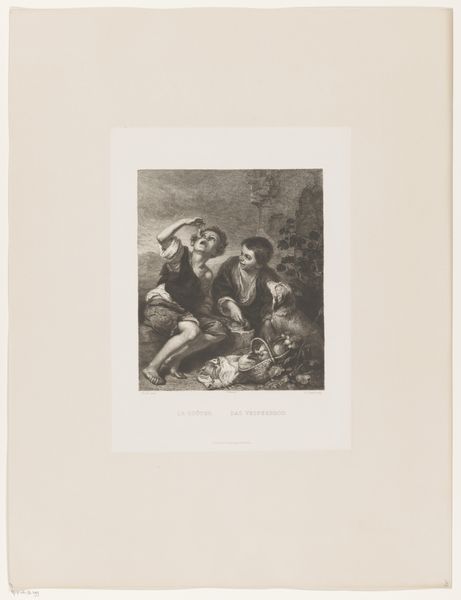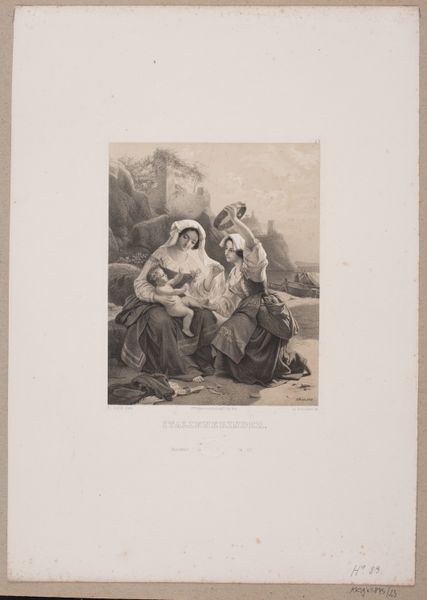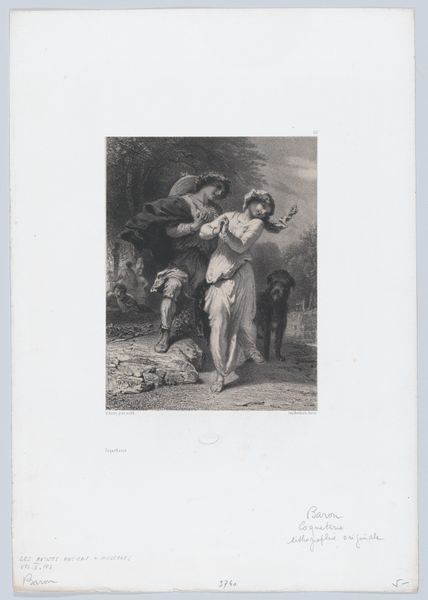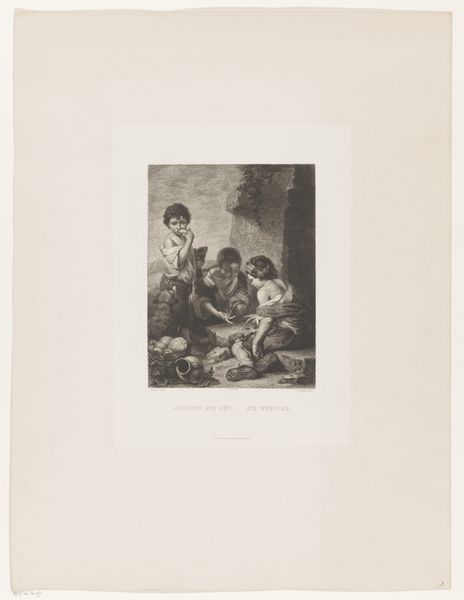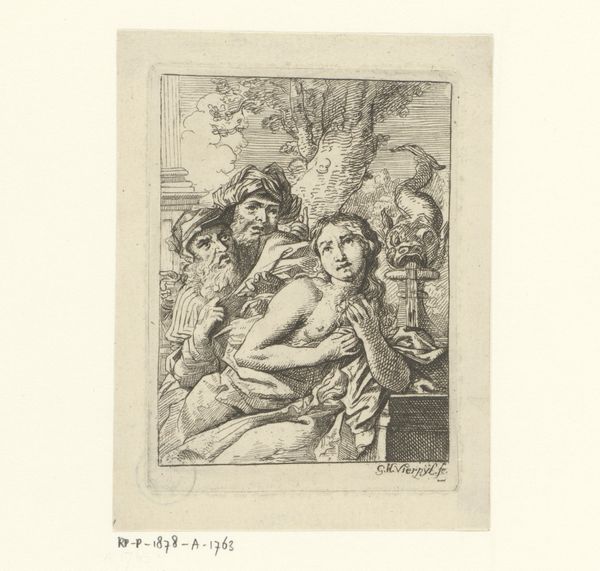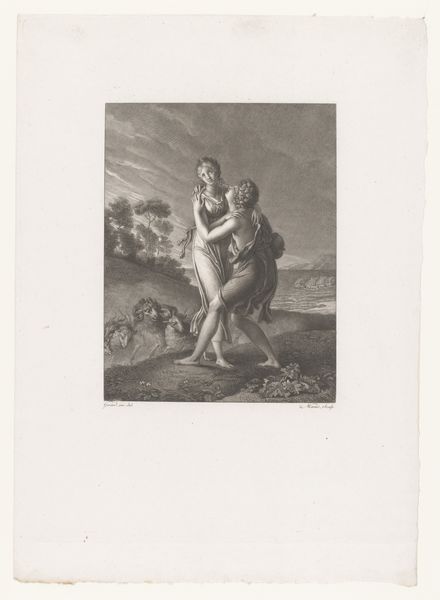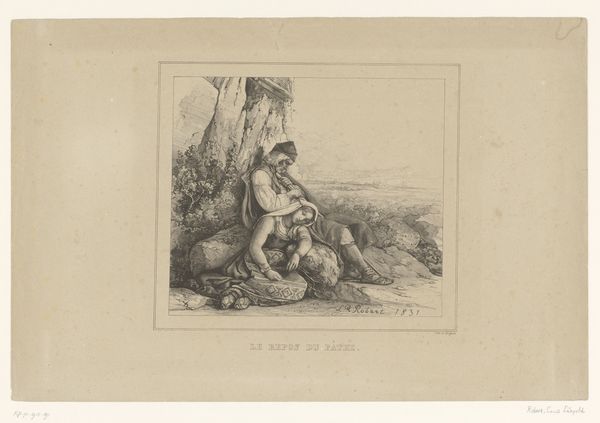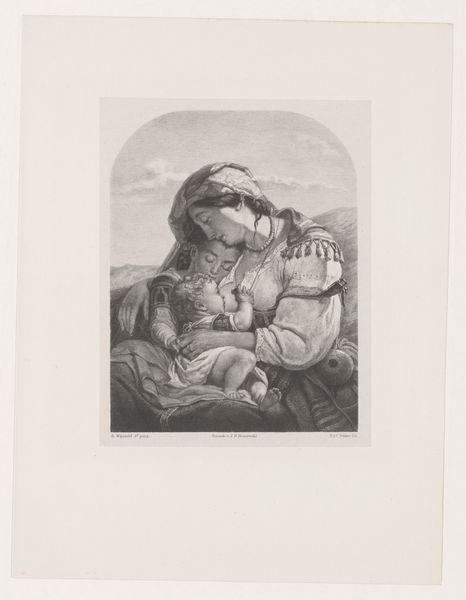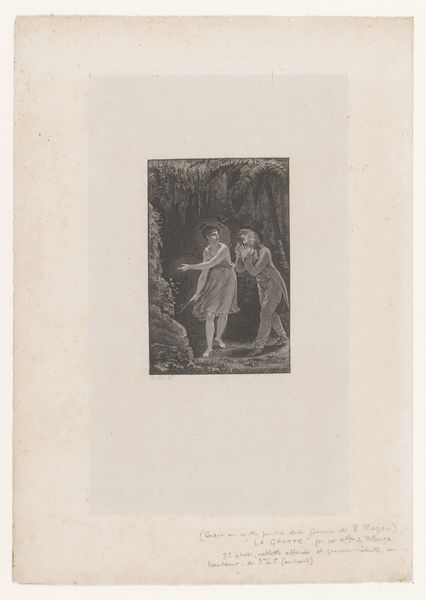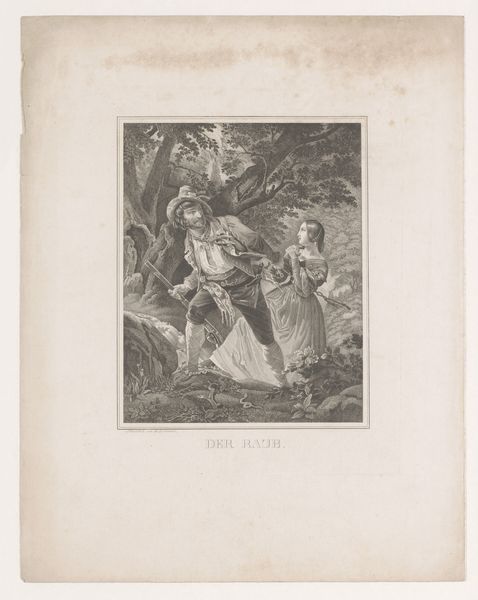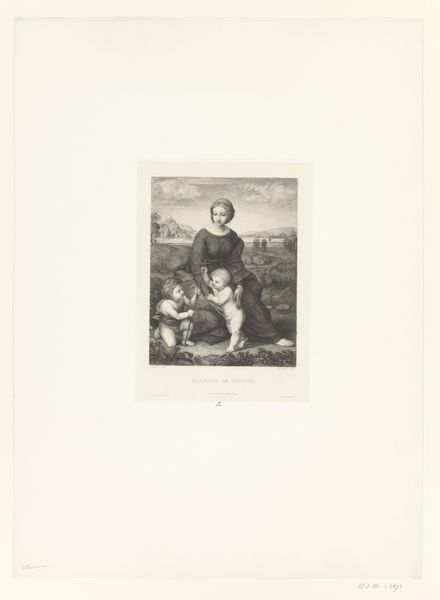
Dimensions: 400 mm (height) x 286 mm (width) (billedmaal)
Curator: "Den skudte fugl," or "The Shot Bird," from the 1880s, is an etching and lithograph print by Adolph Kittendorff, a name that feels like a soft breeze in a Danish meadow. I am immediately drawn to the figures, they're quite…stark. Editor: And brooding! There’s this coastal landscape receding behind two boys sitting on what appears to be a rocky outcrop by the sea. But the air feels thick, heavy. Almost theatrical, wouldn't you agree? Like a melancholic stage set. Curator: Yes, heavy with that pre-storm feeling. The child at the center is shielding themself and then that dead animal, its head at the knee... Oh! And how very deliberate. To stage, frame childhood around death... So poignant. I wonder about that wounded bird…perhaps childhood innocence itself, wounded or lost? Editor: Perhaps, or perhaps Kittendorff is making a broader statement about social conditions through the symbolism of genre painting, something quite common during that era? Consider that landscape, less a picturesque backdrop, and more a reflection of economic struggle and exploitation. These children are barefoot, vulnerable in a rapidly industrializing world, and I suppose we shouldn't forget how Danish art institutions started their public presence back then. Curator: Ooh! Well, your historical perspective anchors it. Because before, I got taken away to those feelings again: That tightening, the dark clouds ready to burst above the shore, it resonates with the ache of inevitable endings… even the landscape echoes, stark, but somehow soft too. Editor: Absolutely, that’s the enduring appeal and tension with works like these. They present a complex tableau inviting viewers to bring themselves into these imagined social narratives, a tension I think Adolph Kittendorff understood perfectly, which ensures a continuing appeal, Curator: Right! I come back around to how powerful that visual statement is…art that keeps you shifting is good art I believe. Editor: I concur entirely; its potency lies in its ambiguity. Let's leave it there, I think, for listeners to continue on their own reflections.
Comments
No comments
Be the first to comment and join the conversation on the ultimate creative platform.

